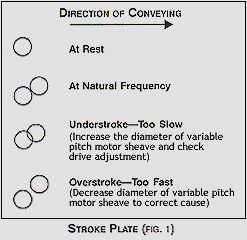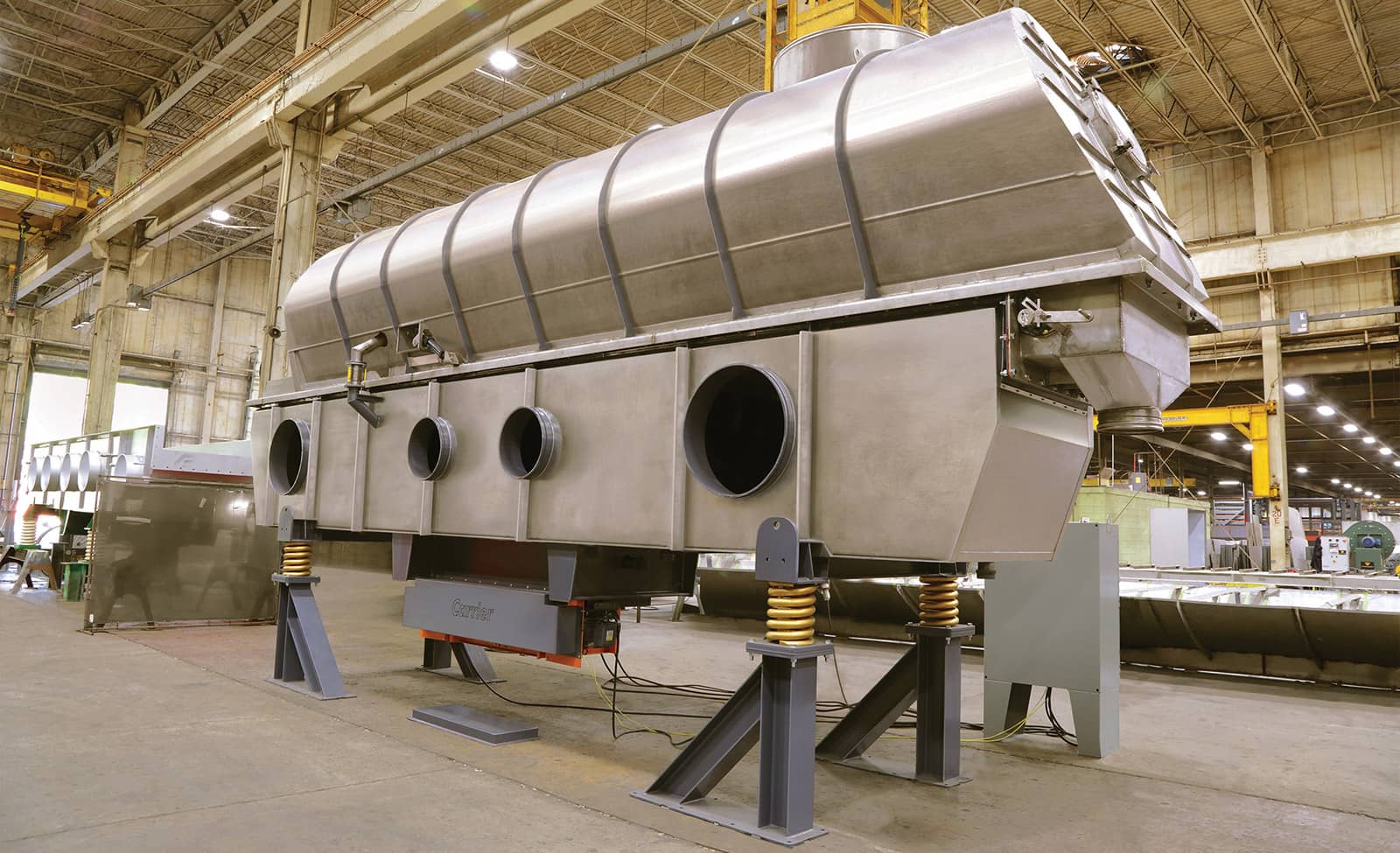What is the serial number of the unit?
The serial number of the unit can be found on the data tag in the drive area and it is also stamped in the end of the drive shaft opposite the driven sheave. Each piece of Carrier equipment is custom designed. The serial number is our identification number for parts lists, drawings, operational manuals, etc.
The serial number can also be found on the lower right-hand corner of the final certified drawings included in your Installation & Operational Manual. A typical serial number will be a five-digit number, i.e. S/N 27111.
What is the unit’s stroke?
 Check the stroke by locating and reading the stroke plate. Refer to Fig. 1. The unit’s stroke should closely match the stroke listed in your Installation & Operational Manual.
Check the stroke by locating and reading the stroke plate. Refer to Fig. 1. The unit’s stroke should closely match the stroke listed in your Installation & Operational Manual.
The stroke plate is a decal or magnetic plate attached to the pan, counterbalance, base or exciter. The diameter of the circle represents the length of stroke. For example, a unit with a 1” stroke would use a stroke plate with a 1″ diameter circle. With the unit in operation, two circles will appear when looking at the moving stroke plate. When the two circles are exactly tangent in the form of a figure 8; the unit is set to its proper natural frequency speed.
Click for a YouTube video on how to read a stroke plate.
If a stroke plate cannot be found on the unit or if it has been painted over and is no longer legible, a temporary stroke plate can be made by using a template to draw the appropriate size circle on a piece of paper or cardboard, which can then be taped or glued on the side of the vibrating member to be measured.
Has any weight been added or removed from the unit?
The addition or removal of any weight to the vibrating member must be countered by adjusting the speed and/or spring system. Please consult Carrier before adding or removing any weight to your unit.
Is the spring count correct, and are the spring bolts properly torqued?
The addition or removal of springs will have a direct effect on the stroke, this includes broken or loose springs. Please refer to your final certified drawing for the correct spring count.
Has any work been completed to the drive recently?
Drive work must be completed as outlined in the Installation & Operational Manual. Typically when drive components are replaced, proper drive timing is overlooked, resulting in hard starts, high amp draw, and short bushing or shock absorber life.
What is the drive shaft RPM?
Increased or reduced drive shaft RPM will correspondingly increase or reduce the unit stroke.
Typical Causes of Overstroke:
- Drive shaft speed too fast, VP sheave out of adjustment.
- Material plugging causing product overload.
- Springs loose, broken, or delaminated.
- Material sticking and building up on pan.
- Weight added to vibrating pan or counterbalance.
- Not enough springs in unit.
- Poor housekeeping.
Typical Causes of Understroke:
- Driven speed too slow; VP sheave out of adjustment or bad bearings.
- Low voltage to motor causing motor to run slow.
- Not enough force developed by rotating weights.
- Weight removed, i.e, missing covers, liners, etc.
- Loose foundation bolts.
- Failure of shock absorbers or torsion bushings.
- Too many springs in unit.
- Drive belts worn or loose.
- Poor housekeeping.
Is the unit noisy?
The presence of any noise or knocking will usually indicate loose bolts. These may be spring, drive, anchor, cover or stabilizer bolts. Also, check for loose setscrews holding the sheave and bearings to the drive shaft. However, other problems, such as overstroke and understroke, may be involved.
What problems are you experiencing?
Be prepared to give a brief summary of the problem before calling, while answering as many of the above questions as possible.







